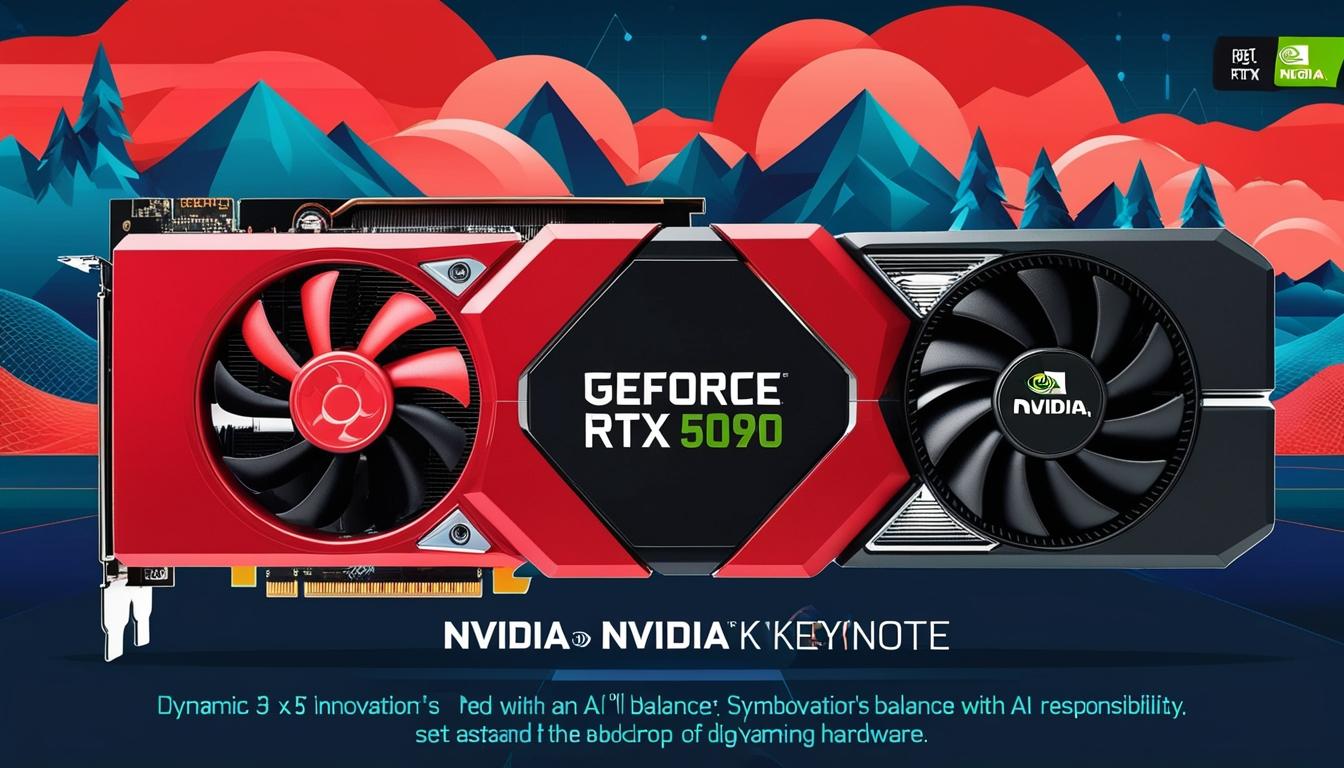During a keynote presentation at CES 2025 on Monday evening, Jensen Huang, the founder and CEO of NVIDIA, highlighted the company's aggressive pursuit of innovation alongside its obligation to address the implications of artificial intelligence (AI) on society. The presentation primarily showcased product innovations while also addressing serious considerations about the direction of technology in the age of AI.
Central to NVIDIA's strategy is its commitment to the gaming segment, evidenced by the introduction of the GeForce RTX 50 series. With the premier model, the $1,999 RTX 5090, promising to double the performance of its predecessor, NVIDIA is reinforcing its presence in the gaming hardware market. The entry-level RTX 5070, which matches the performance of the former top-end RTX 4090, underscores NVIDIA’s objective to make high-performance technology accessible to a broader audience. This approach serves to diversify its revenue streams while maintaining engagement with the gaming community, even as the company ventures into new territories like AI and robotics.
Another notable aspect revealed during the keynote was NVIDIA's ambition to democratise AI capabilities with the introduction of the GB10 chip and Project DIGITS. The GB10, a more compact variant of the high-powered GB200 series, is set to provide advanced AI computing power that was previously the reserve of large enterprises. Combining a Blackwell GPU with a Grace CPU, the GB10 equips developers and smaller companies with the tools they need to innovate effectively in AI. The release of this technology is expected in May and may catalyse a wave of creativity and problem-solving from smaller organisational frameworks.
NVIDIA is also pushing the envelope in AI-driven robotics and automation with its Cosmos platform and Isaac GROOT Blueprint software. The Cosmos platform employs world foundation models (WFMs) to create virtual simulations that mimic real-world conditions, allowing developers to refine AI algorithms without engaging in costly or risky real-world tests. Industries such as automotive, with companies like Toyota and Aurora, are utilising these tools to significantly advance their autonomous vehicle technologies. Additionally, the Isaac GROOT Blueprint software, which works in conjunction with Apple’s Vision Pro headset, offers training resources for humanoid robots, potentially transforming sectors such as logistics and manufacturing.
Huang’s address did not shy away from the pressing issue of sustainability within the tech industry, particularly regarding the environmental impacts of AI. While NVIDIA has achieved a reported 40 percent reduction in the power consumption of specific chips, broader concerns about energy demands from data centres and the environmental costs associated with hardware manufacturing pose significant challenges. Addressing these issues remains crucial as the company seeks to position itself as a responsible influencer in the future landscape of computing.
As Huang's keynote blended technical achievements with a vision for the future, a degree of skepticism regarding generative AI's promise persists. The demonstration of consistent return on investment (ROI) and the ethical complexities surrounding AI deployment are central to ongoing discussions. Although NVIDIA's alliances with market leaders like Amazon and Tesla signify its substantial market presence, a lack of comprehensive case studies revealing transformative successes raises questions about the tangible benefits of these technologies. Moreover, as AI makes inroads into creative industries, concerns about job displacement and ethical implications are proving to be significant topics of ongoing deliberation.
Overall, NVIDIA's keynote at CES 2025 reflected a company at a pivotal point in its history, striving to assert its leadership in the evolving field of AI while confronted with a plethora of challenges. The initiatives introduced by NVIDIA, including Project DIGITS and the Cosmos platform, highlight its ambition to not only innovate but also address the critical issues of energy consumption and societal impact that will inevitably shape the future of technology. Jensen Huang's vision offers a glimpse into a complex future where the balance between innovation and responsibility remains paramount for the tech giant.
Source: Noah Wire Services
